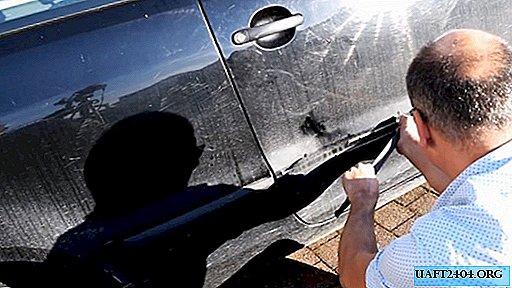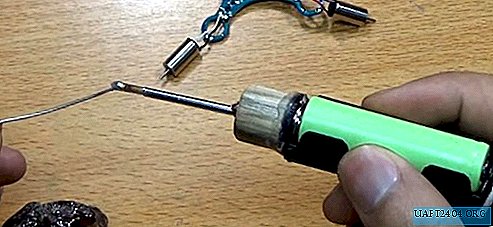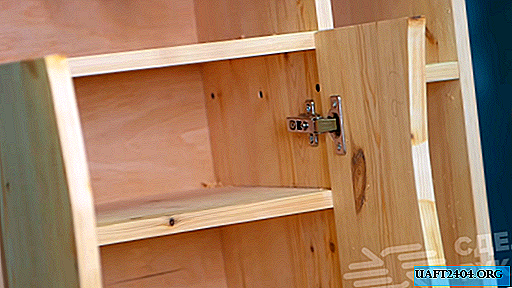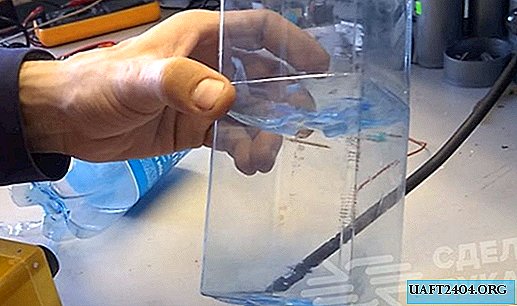Share
Pin
Tweet
Send
Share
Send
This approach will significantly save the family budget and return the car to its previous appearance in the shortest possible time. To implement the plan, you do not need the skills of a professional chiropractor, scarce and expensive materials, and special tools.
Will need
In order to successfully cope with the upcoming work, we need to prepare the following quite affordable items:
- plumber plumber;
- water tank (bucket, kettle, etc.);
- heating device for boiling water;
- rags.
Technology for removing a dent in a car
Dismantle all removable elements in the area of damage. In our case, this is a convex plastic molding, which we just tear off our hands, especially if it is already damaged.

We rinse with clean water and wipe the dent and the metal around it dry. If necessary, use detergents. We also remove traces of glue under the molding.

If you haven’t had to do such work before, it makes sense to watch the video at the end of the article. This will help to avoid serious mistakes and mistakes.

Depending on the size of the dent, we boil in the container the appropriate volume of water, pour the damaged place and the area around it.

This allows you to prepare the metal and paintwork for the upcoming elastic deformations.
Now, without delay, we install a plunger in the deformation zone, starting from the periphery of the dent, and gradually approaching the center. After each suction of the cup of the plunger to the metal surface, we sharply pull the handle towards you with effort. As a result, the alignment of the metal and the dent gradually occurs, and finally disappears.

If the damage depth is small, then it is possible to fix it with one installation of the plunger and its sharp separation. Most often, and especially in the case of a dent with a variable depth and a complex outline, the installation and separation of the plunger must be repeated many times.
When a dent includes a metal bend line, a stiffener or is located close to the edge of the facing element, the task is complicated and one plunger can no longer do. It may have to be combined with thermal (fire) heating, mechanical straightening, the use of putty, etc.

If the dent was eliminated in a short time, it makes sense to lower the temperature of the metal and paintwork by pouring cool water and, thus, return their performance to its original state.
Share
Pin
Tweet
Send
Share
Send











